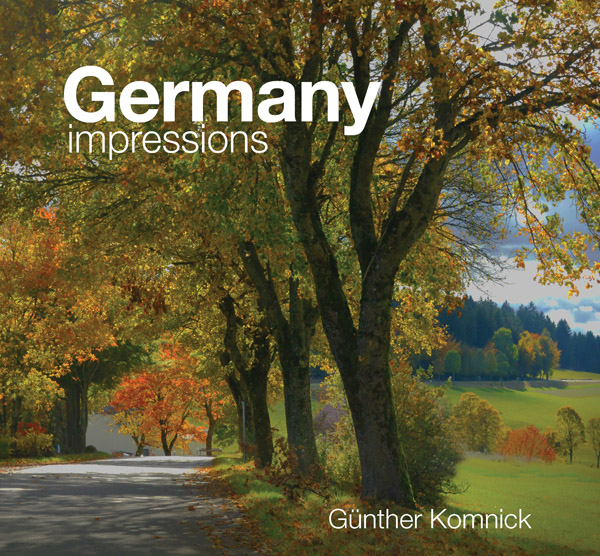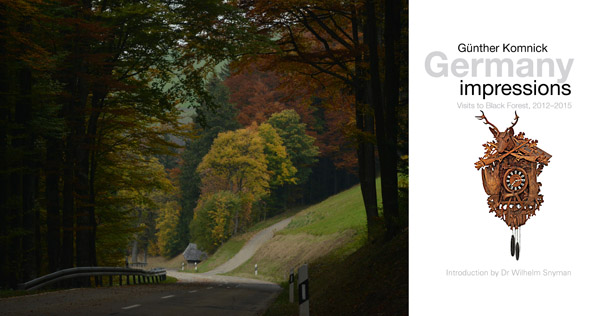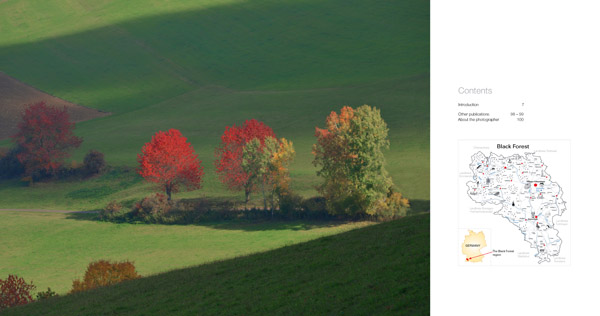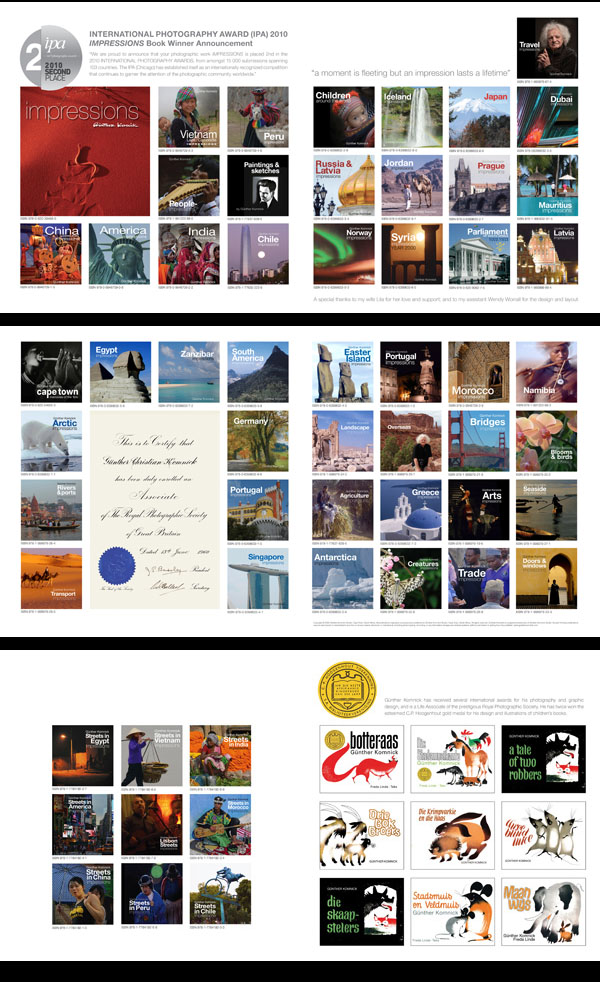Dedicated to my loving wife, Lila

Günther Komnick's Impressions of Germany has the same inspired impetus as his other books, which are not focused on his native land. Günther is German, but not from the neck of the same woods that form the subject of this volume. The onion-domed churches and Fachwerkhäuser (the timber and mortar houses for which Germany is famed) reveal that he has concentrated on southern Germany and on the Black Forest area in particular. This part of Germany Günther knows well, having escaped from his native East Prussia at the end of World War II to the sanctuary that these images amply suggest.
In a land of such enormous cultural weight, it is difficult to decide on which aspect of Germany to concentrate, and he has chosen the natural beauty which miraculously has survived in this highly industrialised country, with its unenviable legacy of war and trauma. In these images we see a Germany that is at one with its traditions. As in his other works, he shows us daily life and the way humans relate to their environment, an environment which also shapes their attitudes and aspirations. Throughout this collection we see images of time-honoured activities, and a way of life seemingly uninterrupted by a traumatic past.
Autumnal and winter landscapes dominate, and awe-inspiring at that. The images also serve as a gentle reminder of a life lived at a human pace, and what is more in a fairy-tale landscape that has bewitched travellers for generations. This is what Günther shows us here, beauty in no need of adornment. However, he also reflects upon human achievement in the examples of splendid mediaeval architecture that does indeed adorn the landscape, nestled in amongst nature that is tamed, but still the master. Bucolic scenes contrast with images of human intervention on a grand scale in the form of castles and churches that speak of the power relations between humans and reflect a fraught religious and political history.
Moreover, in Germany's case, the political and the religious elements of society have been closely intertwined and dominated this country's road until unity was achieved in 1870, only to be torn asunder again for more than forty years, from after World War II until 1990. The Germany Günther portrays here seems at a tranquil distance from all the upheavals that beset his native land. So too, these images are a welcome reminder that some environments have managed to remain true to their origins, despite the seemingly relentless onslaught of modernity.
Dr Wilhelm Snyman, Cape Town, 2017


